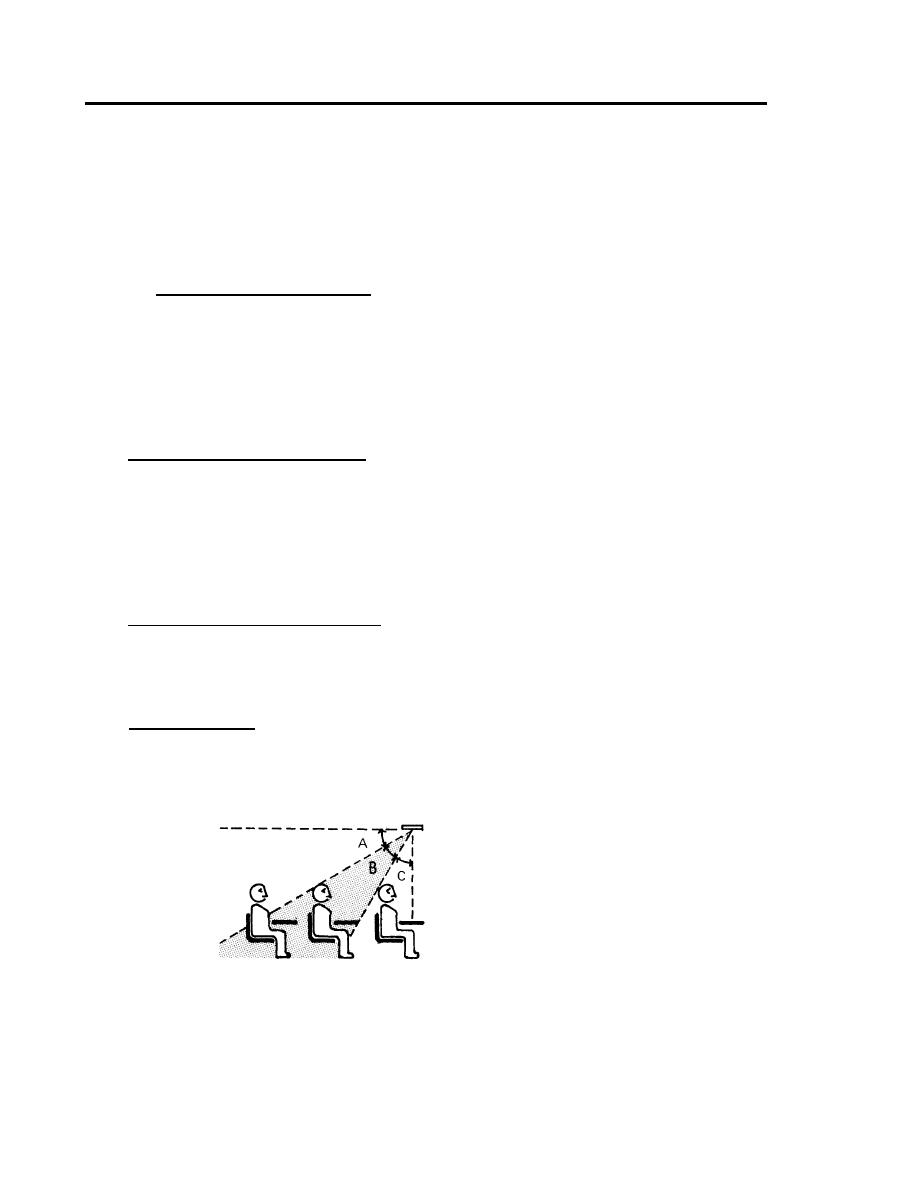
GENERAL DESIGN CONSIDERATIONS
DG 1110-3-112 May 1979
3-4 BUILDING DESIGN (cont'd)
recommended that illumination be designed to supply 70 foot-candles on all educational and office
tasks, since accurate reading of pencil handwriting demands higher illumination levels than most other
visual tasks. Lighting levels higher than 70 foot-candles are not required. Lighting level criteria for
individual spaces are summarized in Chapter 4, Table 4-1.
(b) Adapting to Illumination Changes. In moving from one space to another, an important
consideration is the ability of the eye to adapt to light and darkness. Only 35 seconds are required for
partial, yet safe, adaptation when moving from a dark space to a lighted area. When moving from light
to dark, however, minimal adaptation requires two minutes, total adaptation up to half an hour. Since
personnel entering the ACES Center will be coming from the outdoors, where the level of illumination
may be anywhere from 2,000 to 5,000 foot-candles, it is important to provide adequate lighting in entry
spaces to permit gradual adaptation to interior light levels.
(c) Lateral Differences in Illumination. When personnel are placed in an environment where
illumination on either their left or right is significantly greater than that on the opposite side, their eyes
are subjected to distracting and uncomfortable stresses. This situation often occurs in classrooms
where windows allow exterior light to stream in from one side of the students' field of vision while the
other side is more dimly lighted from the interior. Avoid such conditions by designing the seating so
that the windows are behind the students or when this is not possible, moderate the entering light with
shading or other light-attenuating devices.
(d) Task-Background Illumination Levels. In general, the task (paper, book, item of equipment)
confronting the student should be brighter than the surrounding environment. For optimum contour
and depth perception, it should be three times as bright. Contrasts greater than this produce
distortions. In no case should the task illumination level exceed ten times the general lighting level.
(e) Veiling Reflections. Design lighting so as to minimize light which is reflected off the task or
nearby surfaces directly into the student's eyes. In general, this involves selecting and placing the light
fixture so that the angle of incidence measured from the vertical is greater than 30 degrees, with as
much light as possible falling within the 30 to 60 degree core as shown in Figure 3-3.
A
O degrees 30 degrees
Fixture Glare
30 degrees 60 degrees
B
Optimum Light
c
60 degrees 90 degrees
Veiling Reflections
Figure 3-3 Optimum Lighting
3-11



 Previous Page
Previous Page
